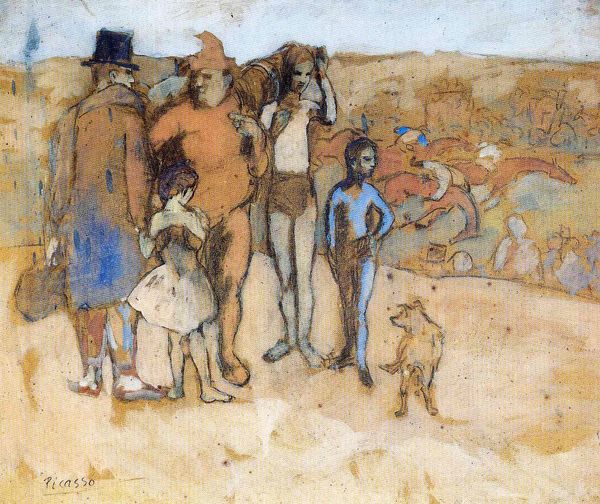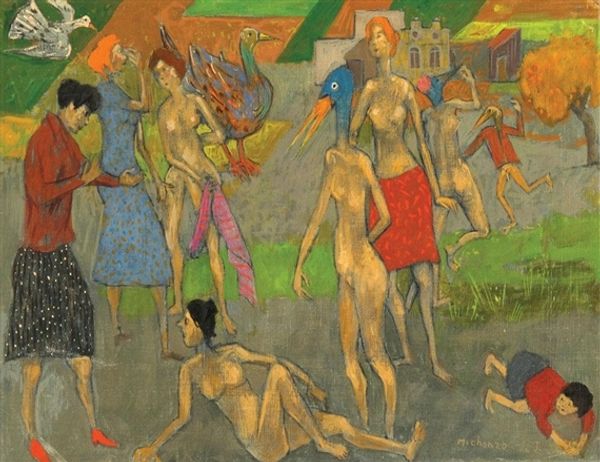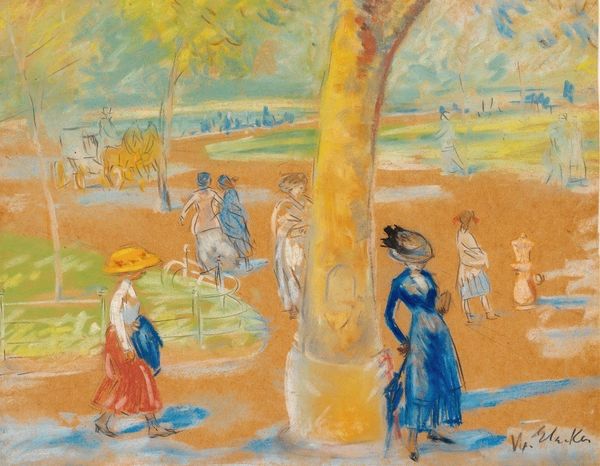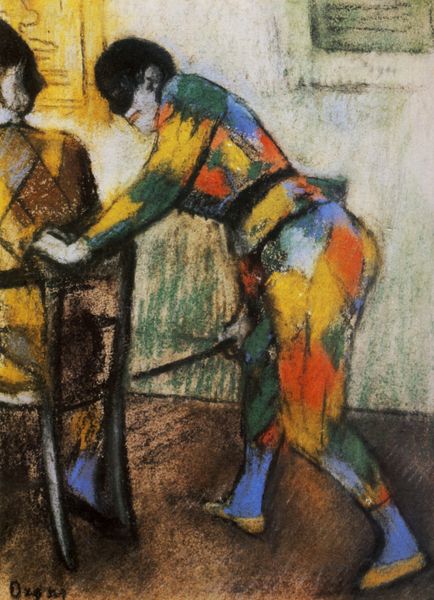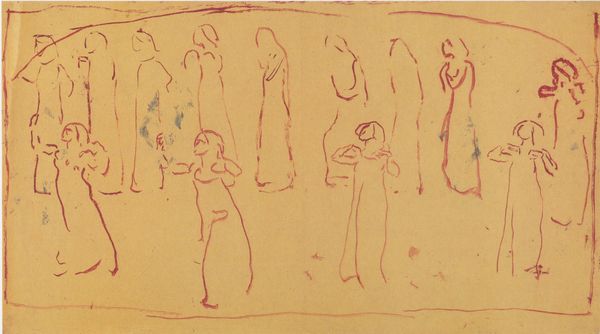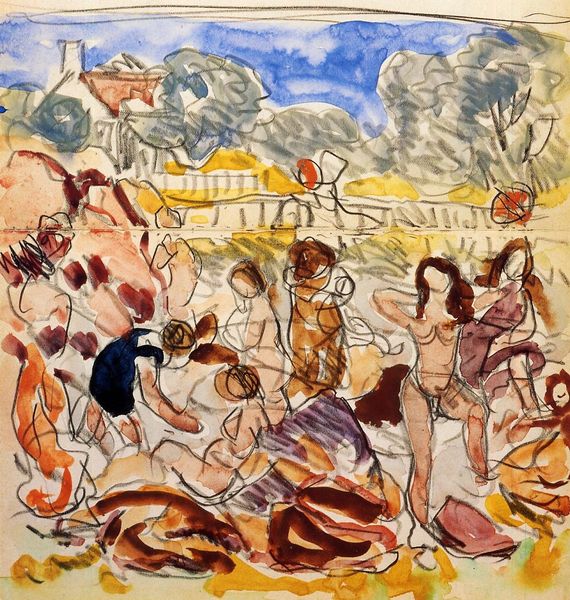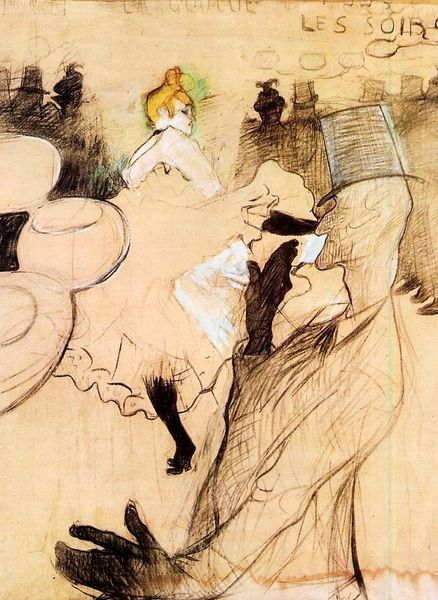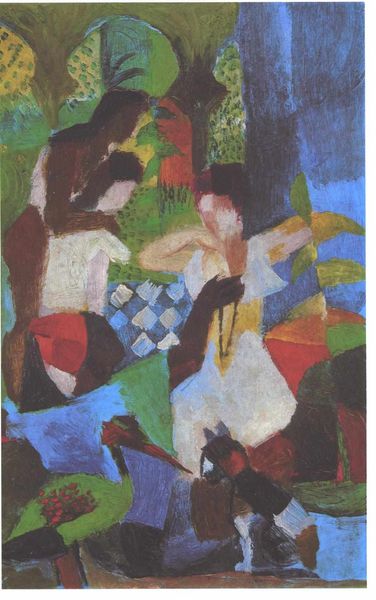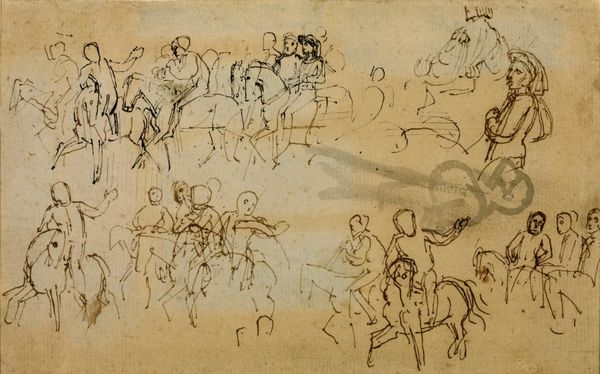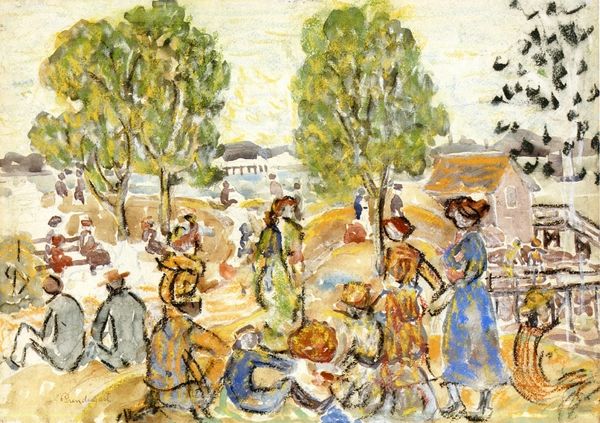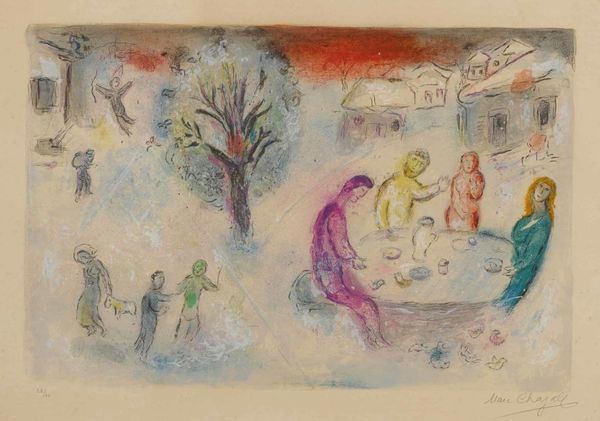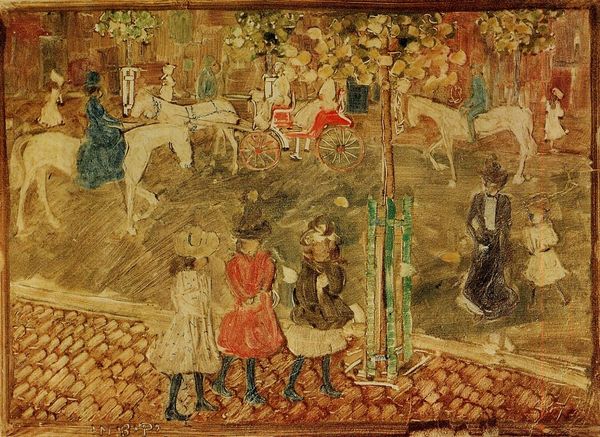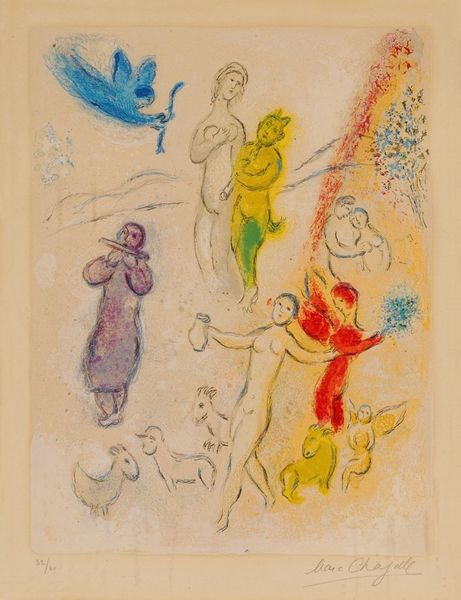
Dimensions: 24.1 x 30.5 cm
Copyright: Public domain US
Curator: What a delicate, almost ghostly scene. This is Picasso's "Family of Jugglers," created in 1905, employing watercolor and printmaking techniques. The landscape feels more like a dreamscape. Editor: Exactly! A dreamscape. The palette is muted, almost as if seen through fogged glass. It has that melancholy beauty—those transient moments glimpsed at twilight. It makes me feel nostalgic for something I've never even experienced. Curator: The composition, though seemingly informal, is quite carefully structured. The figures are arranged across the picture plane, creating a shallow depth of field that pushes the viewer into a more intimate encounter. The family, these itinerant performers, is arranged in small groups, and we can analyze each by how the semiotics point to both inclusion and exclusion from society. Editor: Inclusion and Exclusion! I’d agree the painting is full of such tension. It feels to me like these are lost souls, finding each other as all they have in an arid space. See the horse's drooping neck. It mimics a human slump. Is this about loneliness or a self-contained creative society apart from ours? Curator: Picasso skillfully employs line to delineate form. Notice how these almost ethereal washes suggest the figures. There's a remarkable economy of means here. This technique not only captures the physical form but also conveys something of their spirit. Editor: That dancer atop the ball looks especially trapped! Perhaps it reflects how artists balance on the world’s stage – perpetually striving but forever in a state of uncertainty. Those performers look less joyful than merely present—it is real labor not playful entertainment. Even that infant—that isn’t a smile—but a silent scream into the light. This work doesn't shy away from showing pain as part of artmaking. Curator: Indeed. In conclusion, one cannot help but contemplate how “Family of Jugglers,” transcends mere representation. This exploration, with its interplay of lines and spectral hues, gives us more questions than it provides answers, which perhaps reveals something deeper about humanity's place within society. Editor: You know, examining it closely—as we have, and with all our grand pontificating about life and society, there's this stubborn kernel of hope buried within those desaturated washes. They keep each other company at least. Perhaps hope is merely that. That you do not travel alone through these dark shades.
Comments
No comments
Be the first to comment and join the conversation on the ultimate creative platform.
